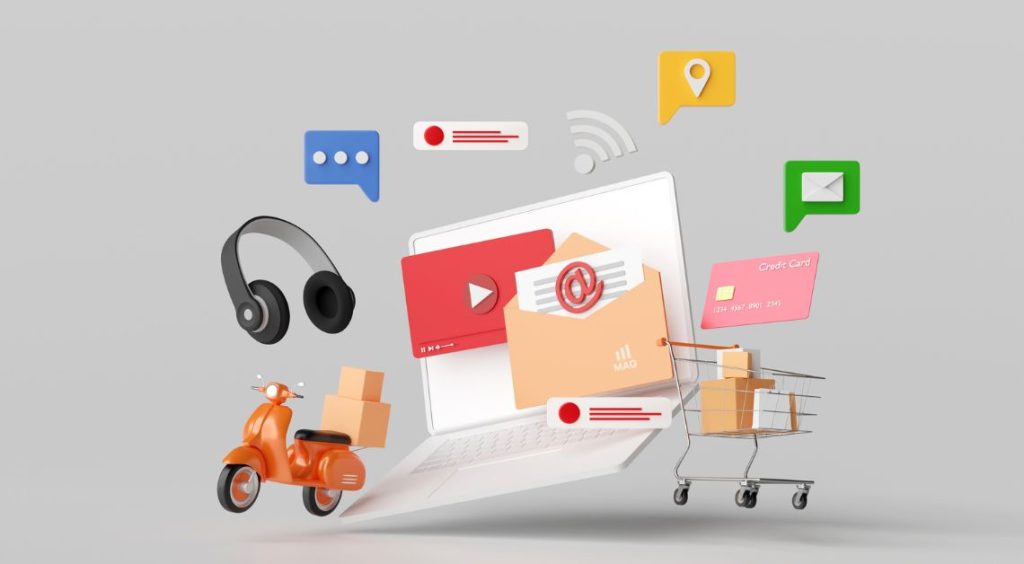Welcome to Part 2 of the Newbie Amazon Selling Guide!
In Part 1, we delved into the essential aspects of setting up your Amazon seller account, conducting thorough product research, crafting compelling product listings, ensuring proper product packaging, and managing fulfillment and inventory. Now, in Part 2, we’ll embark on the next crucial steps to becoming a successful Amazon seller, covering:
- Pricing Strategies and Profitability Analysis: Discover how to price your products competitively while maintaining profitability.
- Order Processing and Customer Management: Learn how to efficiently process orders, handle customer inquiries, and maintain a positive seller reputation.
- Marketing and Promotions: Explore various marketing strategies to boost your product visibility and drive sales.
- Advertising on Amazon: Delve into the world of Amazon PPC (pay-per-click) advertising to maximize your product’s reach.
- Analyzing Performance and Making Data-Driven Decisions: Understand how to track key performance indicators (KPIs) and make informed decisions based on data.
Whether you’re just starting or have some experience under your belt, Part 2 will provide valuable insights and practical guidance to help you navigate the ever-evolving Amazon marketplace. So, buckle up and get ready to take your Amazon selling journey to the next level!
Newbie Amazon Selling Guide: Marketing & Selling Techniques

Marketing on Amazon involves a combination of strategies to increase product visibility and drive sales. Here’s a concise guide on marketing inside the site:
- Optimize Product Listings: Ensure your product titles, descriptions, and images are compelling and include relevant keywords.
- Keyword Research: Use tools to identify high-ranking keywords related to your product. Incorporate these naturally into your product listing.
- Amazon PPC (Pay-Per-Click) Advertising: Create targeted ad campaigns using Amazon PPC. Set a budget, bid on keywords, and pay only when a shopper clicks on your ad.
- Leverage Amazon Coupons and Discounts: Use promotions, discounts, and coupons to attract customers. Amazon often highlights deals, increasing visibility.
- Encourage Customer Reviews: Positive reviews boost credibility. Encourage customers to leave reviews through follow-up emails or by providing excellent customer service.
- Optimize for Amazon A9 Algorithm: Understand how Amazon’s A9 algorithm works. Factors like sales velocity, conversion rates, and product relevance impact your product’s visibility.
- Enhanced Brand Content (EBC): If you have a registered brand, use EBC to enhance your product listings with multimedia content, making them more appealing.
- Utilize Amazon Influencer Program: Collaborate with influencers in your niche through Amazon’s Influencer Program to reach a broader audience.
- Participate in Lightning Deals: If eligible, run Lightning Deals to showcase your product with a limited-time discount, creating a sense of urgency.
- Amazon Live: Utilize Amazon Live to create live-streaming events showcasing your products. This can engage and attract potential customers.
- Monitor Competitor Activity: Keep an eye on competitors’ pricing, promotions, and customer reviews to adjust your strategies accordingly.
- Brand Registry: Enroll in Amazon’s Brand Registry to protect your brand and gain access to additional marketing tools. Find out How Amazon Brand Registry Can Help You Succeed in the Marketplace.
Off-Amazon Marketing:
Strategies for marketing outside of the site to bring buyers in are any marketing efforts that are conducted outside of the Amazon marketplace. This can include a variety of channels, such as:
- Search engine optimization (SEO): Optimizing your website and content so that it ranks higher in search engine results pages (SERPs). This can help you attract more organic traffic to your website and drive sales from outside of Amazon.
- Pay-per-click (PPC) advertising: Running paid ads on search engines and other websites. This can be a great way to reach a wider audience and target specific keywords that your potential customers are searching for.
- Social media marketing: Using social media platforms like Facebook, Twitter, and Instagram to connect with your target audience and promote your products. You can also use social media to run contests and giveaways, and to build relationships with influencers who can help you reach a larger audience.
- Email marketing: Building a list of subscribers and sending them regular emails with product updates, discounts, and other promotional offers. This can be a great way to stay top-of-mind with your customers and encourage them to buy from you again.
- Content marketing: Creating and distributing valuable content that is relevant to your target audience. This could include blog posts, infographics, videos, and e-books. By providing high-quality content, you can position yourself as an expert in your industry and attract more visitors to your website.
- Referral marketing: Partnering with other businesses in your industry to cross-promote each other’s products and services. This can be a great way to reach a new audience and generate sales from outside of Amazon.
In addition to these general strategies, there are also several specific off-Amazon marketing tactics that you can use, such as:
- Affiliate marketing: Partnering with other websites and influencers to promote your products in exchange for a commission on sales.
- Display advertising: Running ads on other websites and apps.
- Public relations: Pitching your story to journalists and bloggers to get coverage for your products.
- Event marketing: Sponsoring or participating in industry events to connect with potential customers and partners.
By implementing a well-rounded off-Amazon marketing strategy, you can reach a wider audience, drive more traffic to your website, and generate more sales from outside of Amazon.
Customer Engagement and Retention:
Amazon sellers can deal with customer engagement and retention in a number of ways. Some of the most effective strategies include:
- Providing excellent customer service: This means being responsive to customer inquiries, resolving issues quickly and efficiently, and going the extra mile to make sure customers are satisfied. Amazon sellers can provide excellent customer service by responding to customer reviews promptly and thoughtfully, offering refunds or replacements for defective products, and resolving shipping and delivery issues quickly and efficiently.
- Personalizing the customer experience: Amazon sellers can personalize the customer experience by offering product recommendations based on past purchases, sending targeted email campaigns, and offering exclusive discounts and promotions to loyal customers. Amazon sellers can also personalize the customer experience by responding to customer reviews in a way that shows that they understand the customer’s needs and are interested in providing a positive experience.
- Building relationships with customers: Amazon sellers can build relationships with customers by engaging with them on social media, participating in forums and online communities, and offering helpful advice and support. Amazon sellers can also build relationships with customers by offering loyalty programs and rewards that encourage customers to keep coming back.
- Offering excellent products and services: Amazon sellers can offer excellent products and services by consistently meeting or exceeding customer expectations. This means offering high-quality products at competitive prices, shipping products promptly and accurately, and providing excellent customer support.
- Making it easy for customers to do business with you: Amazon sellers can make it easy for customers to do business with them by having a user-friendly website and checkout process, offering convenient payment options, and providing clear and concise product descriptions. Amazon sellers can also make it easy for customers to do business with them by offering helpful FAQs and tutorials on their website.
By following these tips, Amazon sellers can improve customer engagement and retention, which can lead to increased sales and profits.
Here are some specific examples of how Amazon sellers can improve customer engagement and retention:
- Respond to customer reviews promptly and thoughtfully. This shows customers that you value their feedback and are interested in providing a positive experience.
- Offer product recommendations based on past purchases. This shows customers that you are paying attention to their needs and are trying to help them find the products they are looking for.
- Send targeted email campaigns. This allows you to reach out to customers with specific offers and promotions that are relevant to their interests.
- Offer exclusive discounts and promotions to loyal customers. This shows customers that you appreciate their business and are willing to reward them for their loyalty.
- Engage with customers on social media. This allows you to connect with customers on a personal level and build relationships with them.
- Participate in forums and online communities. This allows you to share your expertise and build relationships with potential customers.
- Offer helpful advice and support. This shows customers that you are committed to providing them with a positive experience.
- Offer loyalty programs and rewards. This encourages customers to keep coming back and makes them feel valued as customers.
- Consistently meet or exceed customer expectations. This means offering high-quality products at competitive prices, shipping products promptly and accurately, and providing excellent customer support.
- Have a user-friendly website and checkout process. This makes it easy for customers to do business with you.
- Offer convenient payment options. This gives customers flexibility in how they pay for their purchases.
- Provide clear and concise product descriptions. This helps customers to understand what they are buying and makes it easier for them to make a purchase decision.
- Offer helpful FAQs and tutorials on your website. This provides customers with the information they need to do business with you.
Newbie Amazon Selling Guide: Profitability and Growth

Calculating Product Cost
The product cost is the total amount you spend to acquire and prepare your product for sale on Amazon. This includes the following:
- Cost of goods sold (COGS): This is the cost of the product itself, including the cost of materials, labor, and manufacturing.
- Product sourcing costs: This includes the cost of shipping, customs duties, and other fees associated with getting your product to your warehouse.
- Preparation costs: This includes the cost of packaging, labeling, and other tasks required to prepare your product for sale.
Calculating Selling Price
The selling price is the price you charge customers for your product on Amazon. This price should be high enough to cover your product costs and generate a profit, but it should also be competitive with other products in your category.
To calculate your selling price, you will need to consider your product costs, your desired profit margin, and the prices of similar products on Amazon. You can use a pricing tool like Jungle Scout or Helium 10 to help you research the competition and set a competitive price.
Calculating Profit
Your profit is the difference between your selling price and your product cost. To calculate your profit, simply subtract your product cost from your selling price.
Sample Cost & Profit Calculations
Product: Wireless Headphones
Cost of goods sold (COGS): $25.00
Product sourcing costs: $5.00
Preparation costs: $2.00
Total product cost: $32.00
Desired profit margin: 25%
Selling price: $40.00
Profit: $8.00
Here is the calculation of the selling price:
Selling price = (Product cost) + (Product cost * Desired profit margin)
Selling price = ($32.00) + ($32.00 * 0.25)
Selling price = $40.00
Here is the calculation of the profit:
Profit = Selling price – Total product cost
Profit = $40.00 – $32.00
Profit = $8.00
This is just an example, and your actual product costs, selling price, and profit will vary depending on a number of factors, such as the type of product you are selling, your supplier costs, and the prices of similar products on Amazon.
Additional Considerations
In addition to your product cost and selling price, there are a number of other factors that can affect your profitability on Amazon, such as:
- Amazon fees: Amazon charges a variety of fees to sellers, including selling fees, fulfillment fees, and advertising fees. These fees can eat into your profits, so it is important to factor them into your pricing calculations.
- Taxes: You may also be required to pay taxes on your Amazon sales. The specific taxes you owe will depend on your location and business structure.
- Returns and refunds: Some customers will return or request a refund for their products. This can reduce your profits, so it is important to have a good return policy in place.
Tips for Improving Profitability
There are a number of things you can do to improve your profitability on Amazon, such as:
- Sourcing products at a lower cost: This can be done by finding new suppliers, negotiating better prices, or buying in bulk.
- Optimizing your product listings: This includes using high-quality product photos, writing compelling product descriptions, and using relevant keywords.
- Running Amazon advertising campaigns: Amazon advertising can help you reach more customers and increase your sales.
- Providing excellent customer service: This can help you reduce returns and refunds, and it can also lead to positive reviews, which can encourage more customers to buy from you.
Competition And Sales Analysis
Once you have a basic understanding of your product costs and profit margins, you can start to analyze your sales data and track your competition. This will help you identify areas where you can improve your profitability and grow your business.
Sales Analysis
There are a number of things you can track to analyze your sales, such as:
- Sales volume: This is the total number of units of your product that you have sold.
- Revenue: This is the total amount of money you have generated from sales of your product.
- Average order value (AOV): This is the average amount of money that customers spend on each order.
- Conversion rate: This is the percentage of visitors to your product listing who end up making a purchase.
- Customer lifetime value (CLTV): This is the total amount of money you can expect to earn from a single customer over their lifetime.
You can use a variety of tools to track your sales data, such as Amazon Seller Central, Amazon Business Reports, and third-party analytics tools.
By analyzing your sales data, you can identify trends and patterns that can help you make better business decisions. For example, you may find that you are selling more of one product than another, or that you are converting more visitors from one source of traffic than another. This information can help you focus your marketing efforts and make sure that you are listing your products in the most effective way possible.
Competition Analysis
It is also important to track your competition in order to stay ahead of the curve. There are a number of things you can track to analyze your competition, such as:
- Pricing: This is the price that your competitors are charging for similar products.
- Product listings: This includes the product titles, descriptions, photos, and videos that your competitors are using.
- Reviews: This is the number and rating of reviews that your competitors’ products have.
- Advertising: This is the type and amount of advertising that your competitors are using.
You can use a variety of tools to track your competition, such as Jungle Scout, Helium 10, and Seller Labs.
By analyzing your competition, you can identify ways to differentiate your products and services. For example, you may find that you are able to offer lower prices than your competitors, or that you have a better selection of products. This information can help you attract more customers and grow your business.
Additional Considerations
In addition to sales analysis and competition analysis, there are a number of other things you can do to improve your profitability and grow your Amazon business, such as:
- Expanding your product line: This can help you reach a wider audience and increase your sales.
- Improving your customer service: This can help you build customer loyalty and reduce returns and refunds.
- Internationalizing your business: This can help you tap into new markets and grow your sales beyond your local area.
Long-Term Growth Strategies
In addition to the day-to-day tasks of managing your Amazon business, it is also important to develop long-term growth strategies. These strategies will help you ensure that your business is sustainable and that you are able to achieve your long-term goals.
Here are a few long-term growth strategies for Amazon sellers:
- Expand your product line: One of the best ways to grow your Amazon business is to expand your product line. This will give you more opportunities to reach new customers and increase your sales. When expanding your product line, it is important to focus on products that are complementary to your existing products and that are in demand by your target audience.
- Improve your customer service: Customer service is essential for any business, but it is especially important for Amazon sellers. This is because Amazon customers have high expectations for customer service, and they are quick to leave negative reviews if they are not satisfied. By providing excellent customer service, you can build customer loyalty, reduce returns and refunds, and encourage repeat purchases.
- Internationalize your business: If you are only selling your products on Amazon.com, you are missing out on a huge opportunity to reach new customers. Amazon operates in a number of countries around the world, and you can easily sell your products in these countries. To internationalize your business, you will need to translate your product listings, comply with local regulations, and set up a shipping and fulfillment process that can handle international orders.
- Invest in Amazon advertising: Amazon advertising can be a great way to reach new customers and increase your sales. There are a number of different types of Amazon advertising, including Sponsored Products, Sponsored Brands, and Display Ads. Experiment with different types of advertising to see what works best for your business.
- Build your brand: Building a strong brand is essential for long-term success on Amazon. A strong brand will make your products more recognizable to customers and it will encourage them to choose your products over the competition. To build your brand, you can create high-quality product listings, use Amazon Stores, and participate in Amazon Vine.
- Diversify your sales channels: In addition to selling on Amazon, you should also consider selling your products on other channels, such as your own website, other online marketplaces, and brick-and-mortar stores. This will help you reach a wider audience and reduce your reliance on Amazon.
- Stay up-to-date on Amazon’s latest policies and procedures: Amazon is constantly changing its policies and procedures, so it is important to stay up-to-date on the latest changes. This will help you avoid penalties and ensure that you are compliant with all of Amazon’s requirements.
- Use Amazon’s tools and resources: Amazon offers several tools and resources to help sellers succeed. These tools and resources can help you with everything from product research to marketing and fulfillment.
Read our blog post, Empowering Information For Maximizing Your Amazon FBA Profitability and Income and watch this video below to know more.
Newbie Amazon Selling Guide: Indexing and Ranking
Understanding Indexing and Ranking on Amazon
Indexing and ranking are crucial aspects of How to get to the first page and first locations/places in my product’s niche on the sales platform. Indexing refers to the process of adding your products to Amazon’s search index, making them discoverable by potential customers. Ranking, on the other hand, determines the order in which your products appear in search results, influencing their visibility and click-through rates.
Factors Affecting Indexing and Ranking
Several factors influence the indexing and ranking of your products on Amazon:
- Product Title: Your product title should be clear, concise, and accurately represent the product. Include relevant keywords that potential customers might use to search for similar products.
- Product Description: Provide a detailed and informative product description that highlights the key features, benefits, and specifications of your product. Use keywords naturally throughout the description.
- Product Images: Include high-quality, well-lit product images from different angles to showcase the product’s features and appeal to potential buyers.
- Product Reviews: Positive customer reviews can significantly boost your product’s ranking. Encourage customers to leave reviews by providing excellent customer service and addressing any concerns promptly.
- Product Categories: Choose the most relevant product categories for your products. This ensures they appear in the correct search results and reach the intended audience.
- Keyword Optimization: Utilize relevant keywords throughout your product title, description, and backend search terms. Research trending keywords and use them strategically to enhance product visibility.
- Sales Velocity: Products with a consistent sales history tend to rank higher in search results. Encourage sales through promotions, discounts, and effective marketing campaigns.
- Price Competitiveness: Competitive pricing can attract more buyers and boost sales, ultimately improving product ranking.
Strategies for Enhancing Indexing and Ranking
To enhance indexing and ranking on Amazon, consider these strategies:
- Regular Listing Optimization: Regularly review and optimize your product listings, ensuring they are up-to-date, informative, and keyword-rich.
- Targeted Advertising: Utilize Amazon’s advertising tools, such as Sponsored Products and Sponsored Brands, to reach a wider audience and target specific keywords relevant to your products.
- Price Optimization: Monitor competitor pricing and adjust your prices accordingly to maintain competitiveness and attract buyers.
- Inventory Management: Maintain sufficient inventory to avoid stockouts, as out-of-stock products receive lower rankings.
- Customer Engagement: Respond promptly to customer inquiries, address concerns effectively, and encourage positive reviews to boost product credibility and ranking.
- Vendor Central vs. Seller Central: Consider using Amazon’s Vendor Central if you have a large product catalog or a strong relationship with Amazon. Vendor Central offers more control over product listings and pricing.
Watch these videos to know more:
Newbie Amazon Selling Guide: Maximize Sales
Retargeting
Retargeting is a marketing strategy that involves showing ads to people who have previously visited your website or shown interest in your products. This can be done through a variety of channels, such as email, social media, and display advertising.
For example, if someone visits your Amazon product listing and then leaves without buying, you can re-target them with an ad for that same product on another website or social media platform.
Retargeting can be an effective way to increase brand awareness, drive traffic to your website, and increase sales.
For more related information, read another of our blog posts, Brand Tailored Promotions to Skyrocket Your Amazon Success: Personalize Discounts and Cultivate Customer Loyalty
Reselling
Reselling is the process of buying products from one source and selling them at a higher price on another source. This can be a profitable business model, but it is important to do your research and make sure that you are able to source products at a competitive price and sell them at a profit.
There are a number of different ways to resell products on Amazon, including:
- Buying products from wholesalers or distributors
- Buying used products from individuals or businesses
- Buying products from liquidation sales
Once you have sourced your products, you will need to create listings for them on Amazon. Make sure to use high-quality product photos and write compelling product descriptions. You may also want to consider using Amazon’s advertising tools to reach more potential customers.
Upselling
Upselling is a sales technique that involves encouraging customers to buy more expensive products or services. This can be done by offering discounts on upgrades, suggesting complementary products, or offering financing options.
For example, if a customer is buying a new laptop, you could upsell them to a more expensive model with more features. Or, if a customer is buying a new pair of shoes, you could suggest a pair of socks to go with them.
Upselling can be an effective way to increase the average order value and boost your profits.
Additional Tips
Here are a few additional tips for retargeting, reselling, and upselling on Amazon:
- Know your target audience: What are their interests and buying habits?
- Create a strong brand: A strong brand will make your products more recognizable to customers and make them more likely to buy from you.
- Offer excellent customer service: Good customer service will help you build customer loyalty and encourage repeat purchases.
Use Amazon’s tools and resources: Amazon offers many tools and resources to help sellers succeed. Familiarize yourself with these tools and use them to your advantage.
Newbie Amazon Selling Guide: Special Days-Of-The-Year Sales
Holiday Sales Preparation
The holiday season is a huge opportunity for Amazon sellers to boost their sales and reach new customers. However, it is important to be prepared for the increased traffic and demand that comes with the holidays. Here are a few tips to help you prepare for holiday sales on Amazon:
- Start planning early: The holiday season starts earlier than you might think, so it is important to start planning early. This will give you time to get your inventory ready, create holiday-themed listings, and set up your advertising campaigns.
- Research and identify your best-selling products: Analyze your sales data to identify your best-selling products and focus on those during the holiday season. This will help you ensure that you have enough inventory of your most popular products to meet demand.
- Order inventory early: The lead times for inventory can be long, especially during the holiday season. So, it is important to order your inventory early to make sure that you have it in stock when you need it.
- Optimize your product listings: Make sure your product listings are optimized for search and conversion. This includes using high-quality product photos, writing compelling product descriptions, and using relevant keywords.
- Create holiday-themed listings: Create holiday-themed listings to attract more attention during the holiday season. This could include using festive product photos and descriptions, or offering holiday-themed gift wrapping.
- Set up your advertising campaigns: Amazon advertising can be a great way to reach new customers and increase your sales during the holiday season. Make sure to set up your advertising campaigns early so that you have time to optimize them for the holidays.
- Offer promotions: Promotions can be a great way to attract new customers and encourage repeat purchases. Consider offering discounts, free shipping, or other promotions during the holiday season.
- Provide excellent customer service: Customer service is especially important during the holiday season, when customers are shopping for gifts and have high expectations. Make sure to respond to customer inquiries promptly and professionally.
- Monitor your inventory and sales: Monitor your inventory and sales closely during the holiday season. This will help you identify any potential issues and make adjustments as needed.
Check out Amazon’s calendar of shopping events: Know the dates of when to take advantage of celebrations to attract and engage more customers.
Newbie Amazon Selling Guide: Acquisition
Reasons for Acquiring Multiple Amazon Seller Accounts
There are several reasons why an individual or business might consider acquiring multiple Amazon seller accounts:
- Expansion into Multiple Product Categories: If you sell products in diverse categories, having separate seller accounts for each category can make inventory management and sales tracking more efficient.
- Risk Mitigation: Having multiple seller accounts can protect your business from suspension. If one account is suspended, your other accounts will remain unaffected, allowing you to continue selling.
- Testing Pricing Strategies: Multiple seller accounts enable you to experiment with different pricing strategies for your products. This can help you determine the optimal pricing to maximize sales and profits.
- Brand Building: Separate seller accounts can be used to establish distinct brands, allowing you to reach a wider audience and cater to different customer segments.
Methods for Acquiring Multiple Amazon Seller Accounts
There are three primary methods for acquiring multiple Amazon seller accounts:
- Creating New Seller Accounts: This is the most straightforward approach, involving registering new seller accounts through Amazon Seller Central.
- Purchasing Existing Seller Accounts: Specialized companies sell existing Amazon businesses, including their seller accounts. This method requires careful due diligence and evaluation of the account’s history and standing.
- Merging with Another Business: Merging your Amazon business with another seller can provide access to their seller account. This option requires a strategic partnership and well-defined terms for the merger.
Factors to Consider before Acquiring Multiple Seller Accounts
Before acquiring multiple Amazon seller accounts, it’s crucial to consider the following factors:
- Costs: The cost of acquiring multiple seller accounts depends on the chosen method. New accounts are free, while purchasing existing accounts or merging with another business may involve significant expenses.
- Time Commitment: Managing multiple seller accounts can be time-consuming, requiring significant effort to handle inventory, sales, and customer interactions for each account.
- Compliance Requirements: Each seller account must adhere to Amazon’s strict policies and guidelines. Ensure you can effectively manage compliance across multiple accounts.
Recommendations for Acquiring Multiple Seller Accounts
- Conduct Thorough Research: Before acquiring any seller accounts, thoroughly research the accounts’ history, performance, and compliance status.
- Define Clear Goals: Determine the specific objectives for acquiring multiple accounts, such as expanding into new categories or diversifying your brand portfolio.
- Seek Professional Guidance: Consider consulting with experienced Amazon sellers or business advisors to gain insights and support throughout the acquisition process.
- Monitor Performance: Regularly monitor the performance of each seller account to identify areas for improvement and ensure compliance with Amazon’s policies.
Learn how to Conquer the Marketplace: Proven Strategies for Managing Multiple Amazon Seller Accounts.
Newbie Amazon Selling Guide: Exiting
There are a number of reasons why an Amazon seller might want to exit the business. Here are some of the most common reasons:
- Lack of profitability: One of the most common reasons why sellers exit Amazon is because they are not making a profit. This can be due to a number of factors, such as high competition, low product margins, and rising costs.
- Changes in the Amazon marketplace: Amazon is constantly changing its policies and procedures, which can make it difficult for sellers to keep up. These changes can also make it more difficult for sellers to be profitable.
- Burnout: Running an Amazon business can be very demanding, and many sellers find themselves burnt out after a few years. This can lead to them making mistakes and ultimately deciding to exit the business.
- Personal reasons: Sometimes, sellers exit their Amazon businesses for personal reasons, such as a change in family circumstances or a desire to pursue other opportunities.
If you’re considering exiting your Amazon business, there are a few things you need to know. Here is a comprehensive guide to exiting your Amazon business, including the steps involved, the different methods of exit, and the factors to consider when making your decision.
Steps to Exiting Your Amazon Business
- Evaluate your reasons for exiting. Are you looking to retire, pursue other opportunities, or simply reduce your workload? Understanding your motivations will help you determine the best course of action.
- Determine the value of your business. This will involve evaluating your financials, inventory, and brand reputation. You can consult with a business broker or appraiser to get an accurate assessment.
- Choose an exit method. There are several ways to exit your Amazon business, each with its own pros and cons. We will discuss them in detail later in this guide.
- Prepare your business for sale. This includes cleaning up your financials, organizing your inventory, and ensuring that your business is in good standing with Amazon.
- Market your business to potential buyers. You can list your business for sale on online marketplaces, hire a business broker, or reach out to potential buyers directly.
- Negotiate the sale. Once you have received offers, you will need to negotiate the terms of the sale with the potential buyer. This includes the sale price, payment terms, and any other contingencies.
- Close the sale. Once you have reached an agreement with a buyer, you will need to finalize the paperwork and transfer ownership of your business.
Methods of Exiting an Amazon Business
There are three main methods of exiting an Amazon business:
- Selling your business to a third party: This is the most common method of exiting an Amazon business. It involves finding a buyer who is willing to pay you a fair price for your business.
- Shutting down your business: This is the least desirable option, as it means that you will lose all the value you have built up in your business. However, it may be the best option if you are unable to find a buyer or if your business is no longer profitable.
- Merging with another business: This can be a good option if you want to continue to be involved in the Amazon business but you don’t want to run it on your own.
Factors to Consider When Exiting Your Amazon Business
There are some factors to consider when exiting your Amazon business, including:
- The value of your business. The higher the value of your business, the more money you will receive from the sale.
- Your reasons for exiting. If you are looking to retire, you may be willing to accept a lower price for your business to make a quick exit. However, if you are looking to pursue other opportunities, you may want to hold out for a higher price.
- Your tax implications. The sale of your business may have tax implications, so it is important to consult with a tax advisor before making any decisions.
- Your personal goals. What do you want to do after you exit your Amazon business? If you are not sure, it may be helpful to take some time to reflect on your goals.
Additional Tips for Exiting Your Amazon Business
- Get professional help. Exiting an Amazon business can be a complex process, so it is a good idea to get professional help from a business broker, attorney, or accountant.
- Be patient. It may take some time to find a buyer or negotiate a sale, so be patient and don’t give up.
- Do your research. It is important to research the different exit methods and options available to you so that you can make an informed decision.
Here is a related video you can watch:
Newbie Amazon Selling Guide: For Those Sellers Who Only Improve Existing Products To Sell
1. Identify profitable products to improve and sell:
- Analyze customer reviews: Look for products with a mix of positive and negative reviews. Positive reviews can indicate product strengths, while negative reviews can reveal areas for improvement.
- Identify unmet needs: Research trending products and identify gaps in the market. Products that address unmet needs or offer unique features can be more successful.
- Evaluate product demand: Use Amazon’s search bar and keyword analytics to assess the search volume for potential products. Higher search volume suggests stronger demand.
- Consider product differentiation: Look for products with unique features or designs that set them apart from competitors. Differentiation can enhance brand recognition and sales.
2. Improve products based on customer feedback:
- Read and analyze reviews: Carefully review customer feedback, both positive and negative, to identify areas for improvement.
- Prioritize common complaints: Focus on addressing the most frequently mentioned complaints and issues raised by customers.
- Incorporate customer suggestions: Incorporate constructive suggestions from customers to enhance product features or functionality.
- Gather feedback from beta testers: Consider using beta testers to provide real-world feedback on improved product iterations.
3. Find Chinese sources for improved products:
- Utilize online sourcing platforms: Alibaba, AliExpress, and Globalsources are popular platforms for connecting with Chinese manufacturers.
- Attend trade shows and sourcing fairs: Attending industry events can provide direct access to potential Chinese suppliers.
- Seek referrals from existing contacts: Networking with other sellers or industry professionals may lead to recommendations for reliable Chinese suppliers.
- Conduct thorough supplier evaluation: Carefully evaluate potential suppliers based on factors such as pricing, quality control, and production capacity.
4. Import and sale profitability calculations:
- Factor in product costs: Include the cost of goods sold (COGS), including manufacturing, shipping, and import duties.
- Consider marketing expenses: Account for marketing and advertising costs associated with promoting your product.
- Incorporate overhead costs: Factor in business overhead costs, such as rent, utilities, and salaries.
- Calculate profit margin: Determine the profit margin by subtracting total costs from the selling price.
Conclusion: From Zero to Hero
The world of e-commerce is vast and ever-evolving, with Amazon standing as a titan at its forefront. For aspiring Amazon sellers, the prospect of launching a successful business on this platform can be both exciting and daunting. While the path to Amazon success is paved with opportunities, it’s crucial to equip yourself with the knowledge and strategies to navigate the complexities of this digital marketplace.
To embark on this journey, here’s a concise guide to help you establish a solid foundation as an Amazon seller:
- Product Selection: The first step towards Amazon success lies in selecting the right products to sell. Identify products with high demand, low competition, and good profit margins. Analyze customer reviews, market trends, and product differentiation to make informed decisions.
- Sourcing and Pricing: Once you’ve chosen your products, it’s time to find reliable suppliers and establish competitive pricing strategies. Research various sourcing options, including Chinese manufacturers, and factor in all associated costs, such as shipping, customs duties, and marketing expenses.
- Listing Optimization: Create compelling product listings that capture attention and drive conversions. Utilize high-quality product photos, detailed descriptions, and relevant keywords to enhance visibility and search rankings.
- Inventory Management: Maintain efficient inventory management to avoid stockouts or overstocking. Implement inventory tracking systems and establish reorder points to ensure you always have enough products to meet customer demand.
- Customer Service Excellence: Prioritize customer satisfaction by providing prompt and responsive customer service. Address customer inquiries promptly, resolve issues effectively, and strive to maintain a high customer satisfaction rating.
- Marketing and Advertising: Leverage Amazon’s advertising tools, such as Sponsored Products and Sponsored Brands, to reach a wider audience and boost product visibility. Experiment with different advertising campaigns to optimize your marketing efforts.
- Continuous Learning and Improvement: The world of Amazon is constantly evolving, so it’s essential to stay updated on industry trends, competitor strategies, and Amazon’s policies. Enroll in comprehensive courses like My Amazon Guy Success Academy to gain in-depth knowledge and guidance from experienced Amazon sellers.







